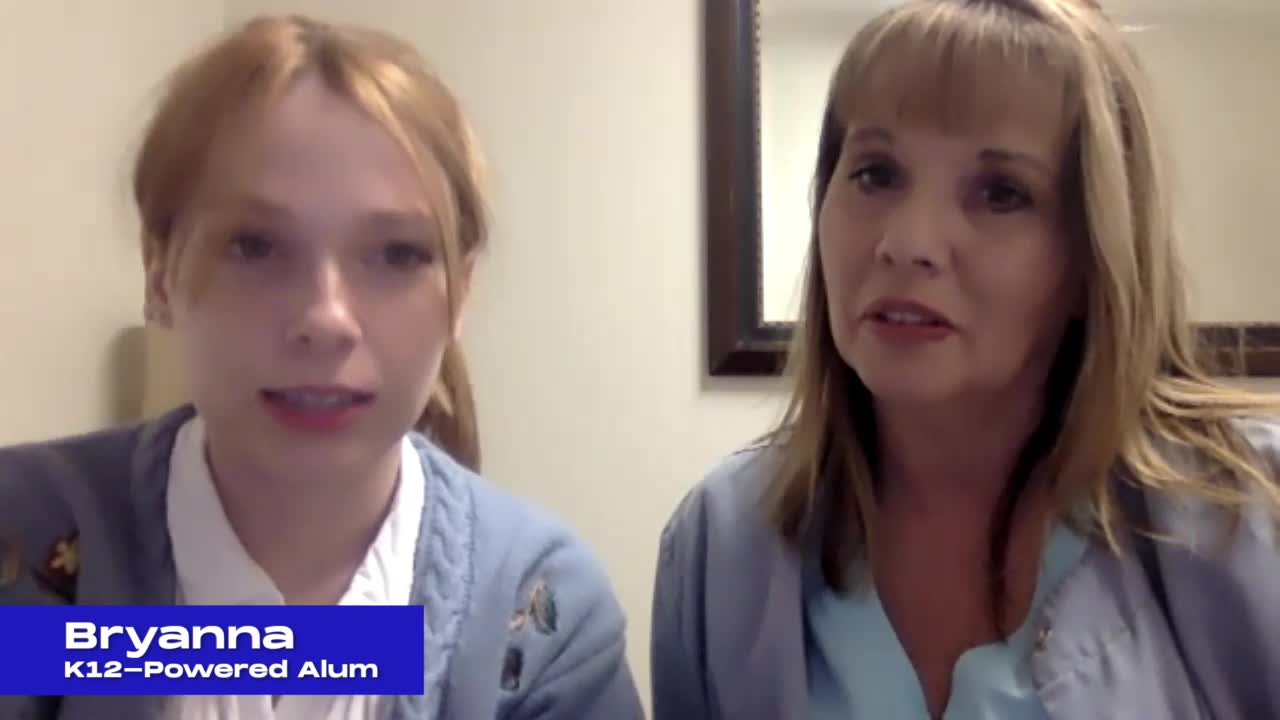Bullying Prevention School Resources for Online Education
Nearly one in five students report being bullied at school.
Bullying can take many forms, from physical altercations to mean rumors and online cruelty, but they share one common theme: it hurts.
What is bullying?
Bullying is repeated, unwanted, and aggressive behavior where someone uses their power, real or perceived, to hurt someone or make them feel bad or intimidated. Cyberbullying takes place online, often using social media. Sometimes it's anonymous; sometimes, it's not.
K12 is committed to bullying prevention—and we can help provide a safe, supportive education alternative for your family.
of parents enrolled their students in a K12-powered school because of safety and/or mental health concerns
In a survey of parents during the 2020–2021 school year, 35 percent of those who responded said they enrolled their children in a K12-powered school because of safety and/or mental health concerns stemming from a previous school.
K12-powered schools are the safe space your family deserves. We know that bullying can impact a student's performance in the classroom. Teachers at K12-powered schools are specially trained in online instruction methods, including understanding and identifying cyberbullying. With more than 20 years of experience in online education, K12 provides a holistic approach to learning that drives student success and engagement.
The K12 experience includes:
Teachers specifically trained for online who recognize the signs of bullying behavior
Anti-bullying programs and educational awareness training and reporting for families
Monitored school social media accounts and groups
Special activities for families during Anti-Bullying Month in October
A zero-tolerance policy for bullying
An environment that helps students understand what bullying is and what it looks like while encouraging bystanders to take action
Anti-Bullying Resources: Facts, Statistics, and What You Can Do
Focus on School, Not the Bullies
Mari has some medical issues that require doctor's appointments during the day. That made it hard to keep up in classes at traditional school, and she'd get picked on when she fell behind. That doesn't happen at her K12-powered school; she has the flexibility to prioritize her education and health without the bullying.
Real students tell their stories.
Watch Bryanna and Tammy’s story about surviving bullying and finding community online with K12.

Is the safety of a K12-powered online school right for your family?
How to prevent bullying
If you're an adult, intervene immediately, stay calm, model respectful behavior, and make sure everyone is safe. Send the message that bullying is not acceptable.
Keep the lines of communication open, and always listen. Make sure not to downplay the issues or think kids can handle them on their own.
Remember, parents and caregivers are students' number one advocates and know best about how their students learn. Some students learn best when they have fewer classroom distractions, like bullies. No matter the preferred method, experienced online providers offer families and teachers a personalized and structured experience to meet each student's learning needs.
Anti-Bullying: Resources and Tips
Signs a Child Is Being Bullied
Not all children who are bullied or are bullying others ask for help, so recognizing the warning signs is essential. According to StopBullying.gov, signs a child is being bullied might include:
Unexplainable injuries
Lost or destroyed clothing, books, electronics, or jewelry
Frequent headaches or stomach aches, feeling sick, or faking illness
Changes in eating habits, like suddenly skipping meals or binge eating. Kids may come home from school hungry because they didn't eat lunch.
Difficulty sleeping or frequent nightmares
Declining grades, loss of interest in schoolwork, or not wanting to go to school
Sudden loss of friends or avoidance of social situations
Feelings of helplessness or decreased self-esteem
Self-destructive behaviors such as running away, harming themselves, or talking about suicide
K12 Partners with
“No student should ever be worried about going to school or logging into class because they’re afraid of being abused or mistreated.”
— James Rhyu,
K12 Chief Executive Officer
Effects of Bullying
In addition to the list of possible signs above, bullied kids might experience mental health effects like depression, anxiety, and loneliness; changes in physical health; and decreased academic achievement. They are more likely to miss or drop out of school and have increased suicidal ideation.
It's worth noting that the effects are not limited to the targeted children. Children who bully are also at risk. They are more likely to abuse alcohol and drugs, get into fights, drop out of school, and even carry that abusive behavior into adulthood.
How K12-Powered Schools Support Bullying Survivors
When to Call for Help or Get Medical Attention
While bullying is never okay, some situations may require emergency attention. These include cases where:
A weapon is involved
There is serious bodily harm. or threats of serious physical injury
There are threats of hate-motivated violence such as racism, homophobia, or transphobia
There is sexual abuse
Anyone is accused of an illegal act such as robbery or extortion
Learn Safely with K12's Dedication to Bullying Prevention
K12's online bullying prevention program offers students the safe learning environment they need to thrive. Follow the links below to learn more and find peace of mind with K12.
